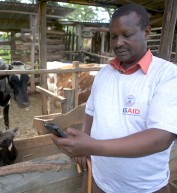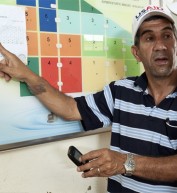A number of strategies can help overcome common barriers to energy efficiency financing.
Barriers that may hinder investments in energy efficiency include their relatively small size and their high transactional costs compared to traditional investments. Lenders also may have difficulty collateralizing loans for energy efficiency and building managers may lack technical expertise in identifying energy savings opportunities.
Encouraging Smaller Investments
Energy efficiency investments tend to be smaller, offer better returns and pay back more quickly than typical infrastructure investments but often remain overlooked. For example, an individual investment to provide more energy-efficient technology for an industrial plant’s energy systems (heat, light, power, compressed air, water) will tend to be much smaller than for energy supply infrastructure projects such as central power plants.
This size factor discourages capital institutions from considering efficiency investments and may affect investment decisions within an enterprise. Even though efficiency investments offer very competitive returns, they are often overlooked in favor of larger, revenue-generating production investments. A key challenge within enterprises is to motivate senior managers to view efficiency investments as a strategic priority that supports profitability as well as growth and sustainability.
Energy efficiency investments are often eschewed at major investment institutions due to their smaller value and volume (but relatively high transaction cost). At present, few case studies exist which demonstrate successful implementation of schemes promoting smaller investments. However, financing strategies that establish dedicated credit lines through revolving funds and other established financing mechanisms such as a registered Clean Development Mechanism project can help bundle a series of similar, small loans and make them more attractive.
Minimizing Transaction Costs & Partial Loan Guarantees
Due to the nature of energy efficiency investing (high volume and smaller loans), minimizing the transaction costs and sharing risk can make this type of investment more attractive to financiers. Developing country-specific standardized energy baseline measurement protocols which are applicable to each potential project can reduce transaction costs. In addition to reducing the time and effort needed to measure baseline energy use, according to the Efficiency Valuation Organization’s (EVO’s) International Performance Measurement and Verification Protocol (IPMVP), a standardized protocol can increase confidence in the projected outcome of efficiency investments, thereby increasing investor confidence in energy efficiency project loan performance. In conjunction with improving technical expertise, a transparent protocol for measuring pre-implementation and post-implementation energy use on the same robust basis can mitigate lenders’ perceived risks.
In addition, international donors with experience investing in energy efficiency projects may be willing to serve as loan guarantors to local financial institutions if local borrowers default on their loans. These same donors can also provide technical assistance to help minimize such risks. See below for an example of partial loan guarantees in Central and Eastern Europe.
Commercializing Energy Efficiency Finance (CEEF) Program
In Central and Eastern Europe, the Global Environment Facility (GEF) and International Finance Corporation (IFC), approved up to $106 million in partial risk guarantees for loans issued by local financial institutions as well as technical capacity-building assistance for financial institutions and ESCOs. The IFC which was already overseeing a smaller-scale version of CEEF, the Hungary Energy Efficiency Co-Financing Program (HEECP2), merged HEECP2 into CEEF.
Partial risk guarantees, which minimize risk for inexperienced financial institutions issuing individual and portfolio loans for energy efficiency projects, support the development of dedicated energy efficiency credit lines and streamlined proposal review processes.
Fourteen financial institutions provided over $135 million USD in loans for energy efficiency and renewable energy projects totaling $240 million USD. Over 800 projects were funded with no reported defaults.
Fostering Technical Expertise
Facility-level and system-level metering can be important for measuring and verifying energy savings. Energy supply projects typically produce metered output in kWh or units of fuel, making their performance fully transparent. Efficiency projects often benefit from dedicated metering to provide analogous information on project performance. Quantitative monitoring of energy use at specific system or device levels within industrial facilities is relatively uncommon in developing countries but can be very useful in determining where targeted investment in energy efficiency will yield the greatest benefits. In the end, energy savings can never be metered with the same accuracy as production volumes in supply projects because the baseline usage is always a calculated estimate. It is not possible to know exactly what the energy usage “would have been.”
To compensate for this inherent limitation in energy savings estimates, it is important to apply external expertise to assess the costs and benefits of energy saving investments. Most firms do not have technically-trained, in-house energy managers and therefore lack expertise in identifying savings opportunities. More commonly, energy is one of the duties of facility managers who are also responsible for all aspects of facility operations and thus lack expertise in specific areas such as energy. Therefore, investment in the skills needed to identify and assess energy efficiency opportunities is an important prerequisite for realizing energy efficiency improvements and reassuring investors. See the example below to learn about USAID support for energy management training in Kazakhstan.
Central Asia Energy Efficiency Support Program (CAEESP)
In Kazakhstan, the USAID Central Asia Energy Efficiency Program (CAEESP) engaged with the industrial sector to provide technical analyses and subsequent trainings on ISO 50001 energy management accreditation.
Implementing a strong energy management system typically saves 15 percent to 20 percent of energy costs due to continuous monitoring and management of energy consumption, and USAID’s involvement facilitated the accreditation of four of Kazakhstan’s largest industry players to ISO 50001.
These entities are now better-prepared to adopt and evaluate a series of previously identified technical best practices. Additionally, USAID provided energy efficiency financing trainings to local loan officers from the Asian Credit Fund, introducing participants to simple energy efficiency scorecards they can refer to when evaluating loans for residential energy efficiency enhancements.
Conversely, lenders (banks and other investors) are often technically unprepared to assess how energy efficiency projects can generate cost savings and how savings can engender new cash flows and increased credit capacity. Low awareness, lack of information and technical understanding, and high perceived technical and business risks all prevent lenders from recognizing energy efficiency investments as bankable. Providing technical and related training to lenders can enable potential investors to appreciate the business case for energy efficiency.
On-Bill Financing
On-bill financing involves creating a debt repayment mechanism for energy efficiency project loans. The customer pays for the energy efficiency improvement over time through added monthly charges to their utility bills. Ideally, the debt payment will be less than or equal to the energy cost savings, resulting in positive cash flow and enabling debt repayment without increasing total financial obligations. On‑bill financing can be structured as a loan repayment, where the utility customer is responsible for the balance of the loan if he/she terminates the utility account. Some utilities have created special tariffs for such situations, wherein the debt repayment is structured as a fee and the obligation is tied to the physical address. Under this system, future account holders are liable for remaining payments.
On-bill financing for residential energy efficiency improvements is a concept that has not been fully explored in developing countries. While it is attractive as an opportunity to address the first cost barrier and the loan security concerns of lenders, on-bill financing is a complex undertaking. It can entail software changes to utility billing systems, legal and financial agreements among lenders, utilities, and governments, and agreements on contingencies involving partial payment or default. These are barriers that can be targeted through utility technical assistance programs and other forms of consumer energy efficiency support. More information about on-bill financing can be found in the Pricing and Incentives Technical Guide.
Learn about private sector financing opportunities.







Comment
Make a general inquiry or suggest an improvement.